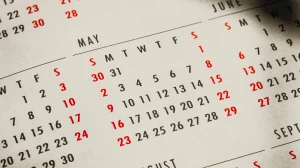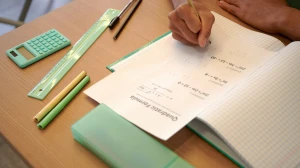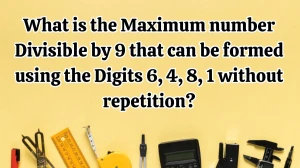A vendor bought bananas at 6 for a Rupee. How many for a Rupee must he Sell to Gain 20%?
by
Updated Jun 20, 2024

A vendor bought bananas at 6 for a Rupee. How many for a Rupee must he Sell to Gain 20%?
To determine how many bananas a vendor must sell for a rupee to achieve a 20% profit, follow these steps.
The vendor buys bananas at a rate of 6 bananas for 1 rupee. This means the cost price (C.P.) for each banana is 1/6 rupees.
The vendor wants to gain a 20% profit.
To find the selling price (S.P.) for 6 bananas that includes this profit, we calculate 20% of the cost price of 6 bananas (which is 1 rupee) is 20/100 x 1 = 0.2 rupees
Therefore, the selling price for 6 bananas should be 1 + 0.2 = 1.2 rupees
To find out how many bananas the vendor must sell for 1 rupee to make this profit, we need to determine the selling price per banana.
Since 6 bananas are sold for 1.2 rupees, the selling price per banana is S.P. per banana = 1.2/6 = 0.2 rupees per banana
Now, to find out how many bananas can be sold for 1 rupee at this new selling price, we divide 1 rupee by the selling price per banana
Number of bananas per rupee = 1/0.2 = 5
Therefore, the vendor must sell 5 bananas for 1 rupee to achieve a 20% profit.
How to calculate Selling Price to find Profit?
The first step is to know the cost price (C.P.) of the items you are selling. The cost price is the amount spent to purchase or produce the goods. Next, decide the percentage of profit you want to achieve. Profit is typically calculated as a percentage of the cost price.
Calculate Selling Price
To find the selling price (S.P.), add the desired profit to the cost price. The formula for calculating the selling price when a profit percentage is desired is
S.P. = C.P. + (Profit Percentage/100 x C.P.)
This ensures that the selling price includes both the cost and the profit margin.
When dealing with items sold in bulk, such as multiple units for a certain price, adjust the calculations to reflect the total cost and total selling price for the quantity. If items are sold in sets or groups, calculate how many units should be sold for a given price to achieve the desired profit. This involves dividing the total selling price by the price per unit.
Finally, verify that the new selling price aligns with the desired profit margin by recalculating and ensuring the profit percentage is accurately reflected in the new price.




